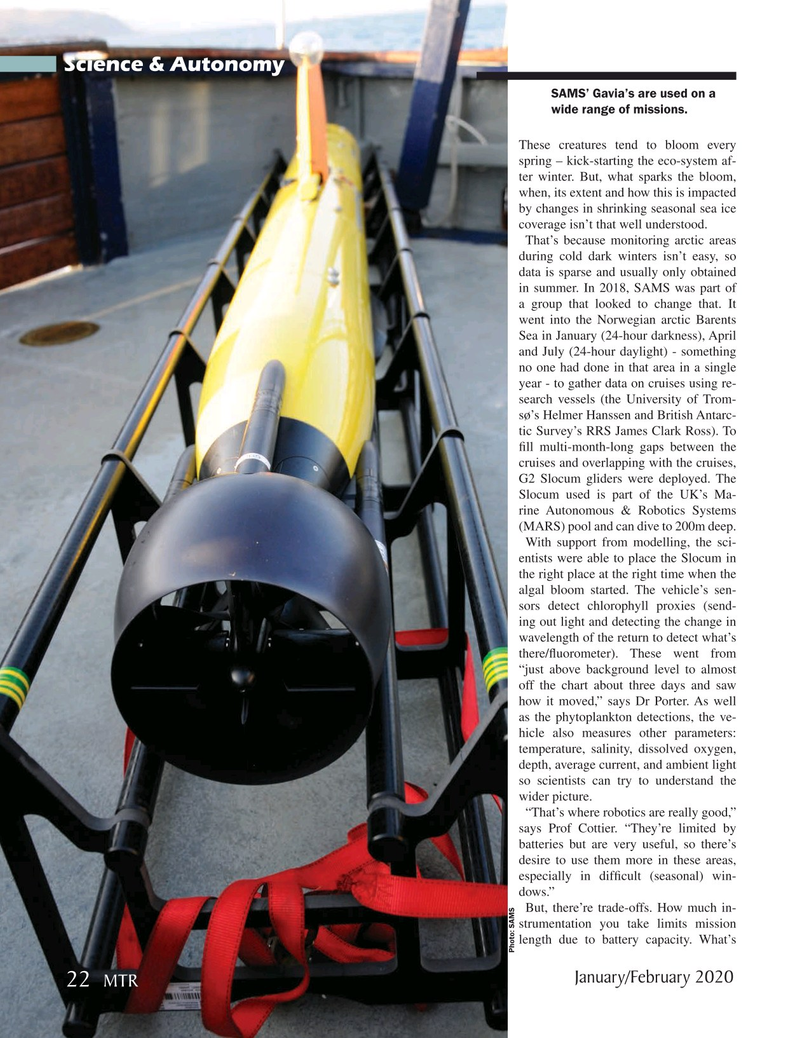
Page 22: of Marine Technology Magazine (January 2020)
Read this page in Pdf, Flash or Html5 edition of January 2020 Marine Technology Magazine
Science & Autonomy
SAMS’ Gavia’s are used on a wide range of missions.
These creatures tend to bloom every spring – kick-starting the eco-system af- ter winter. But, what sparks the bloom, when, its extent and how this is impacted by changes in shrinking seasonal sea ice coverage isn’t that well understood.
That’s because monitoring arctic areas during cold dark winters isn’t easy, so data is sparse and usually only obtained in summer. In 2018, SAMS was part of a group that looked to change that. It went into the Norwegian arctic Barents
Sea in January (24-hour darkness), April and July (24-hour daylight) - something no one had done in that area in a single year - to gather data on cruises using re- search vessels (the University of Trom- sø’s Helmer Hanssen and British Antarc- tic Survey’s RRS James Clark Ross). To ? ll multi-month-long gaps between the cruises and overlapping with the cruises,
G2 Slocum gliders were deployed. The
Slocum used is part of the UK’s Ma- rine Autonomous & Robotics Systems (MARS) pool and can dive to 200m deep.
With support from modelling, the sci- entists were able to place the Slocum in the right place at the right time when the algal bloom started. The vehicle’s sen- sors detect chlorophyll proxies (send- ing out light and detecting the change in wavelength of the return to detect what’s there/? uorometer). These went from “just above background level to almost off the chart about three days and saw how it moved,” says Dr Porter. As well as the phytoplankton detections, the ve- hicle also measures other parameters: temperature, salinity, dissolved oxygen, depth, average current, and ambient light so scientists can try to understand the wider picture. “That’s where robotics are really good,” says Prof Cottier. “They’re limited by batteries but are very useful, so there’s desire to use them more in these areas, especially in dif? cult (seasonal) win- dows.”
But, there’re trade-offs. How much in- strumentation you take limits mission length due to battery capacity. What’s
Photo: SAMS
January/February 2020 22 MTR
MTR #1 (18-33).indd 22 1/16/2020 11:22:38 AM

 21
21

 23
23
